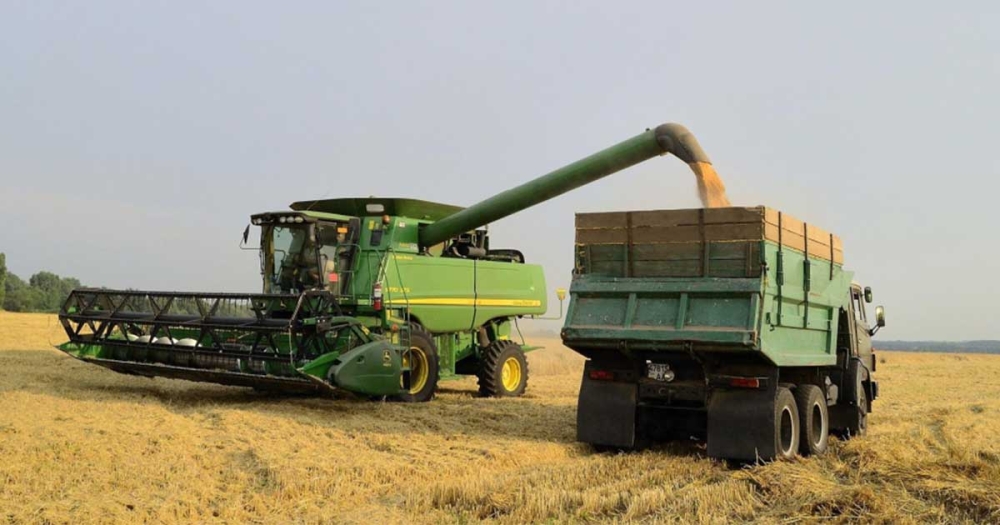So far, due to the coronavirus and the disruption of usual supply chains, the news has been mainly about shortages of energy, raw materials and products made from them. But the Russia-Ukraine conflict is pushing us towards a new level of deficit economy. The dwindling supply of staple cereals and fertilizers is also creating a new situation in the agricultural sector, which could lead to a rapid acceleration in the rate of inflation, increased migratory pressure or even the outbreak of new violent conflicts.
At the beginning of May, the international agricultural trade database Tridge published a Hungary-related article on its website from an Italian perspective, revealing some interesting facts about the trade in agricultural products. The article says that Hungary has restricted its exports of cereals to the EU in order to secure its own supplies, and also to slow down the predicted significant price rises. However, this is bad news for the Italians, as almost 30% of the wheat supply of Italy, a country six times more populous than Hungary, comes from Hungary. Nevertheless, the fact that bread in Italy is expected to be more expensive this year than last, partly due to Hungarian export restrictions, is just the tip of the iceberg. Food price rises are the result of much more general and significant global market developments.
Both parties in the Russia-Ukraine war are also major players in the world market for agricultural products. We are already experiencing food price rises and the situation could get worse in the coming months. Of course, this is also linked to the rise in energy prices, as the price of energy is a key factor in the price of all sectors of the economy, including agriculture. We must not forget, however, that the war is also directly affecting Ukrainian and Russian agriculture at the level of production, and that, in addition to production, the possibilities for export are increasingly limited. This (given the weight of the two countries in the sector) has and will have a negative impact on world food security.
Wheat
An analysis of the two countries' agricultural export indicators helps to understand the gravity of the problem. Let's start with wheat, the most important cereal for which both countries have a significant share of the world market. Wheat is the second most important cereal for human nutrition worldwide after rice.
IN 2020, RUSSIA WAS THE THIRD AND UKRAINE THE FOURTH-LARGEST WHEAT EXPORTER IN THE WORLD, ACCOUNTING FOR 11.8 AND 10.6 PERCENT OF WORLD WHEAT EXPORTS RESPECTIVELY.
As the war is draining labor and capital from agriculture in both countries, and in the case of Ukraine in particular, severely compromising transport infrastructure, these export values could fall significantly this year. This is also indicated by the fact that Ukraine's spring sowing area this year is 7 million hectares so far, 25-30% below last spring. In addition, almost 25 million tons of grain are stuck in Ukraine, unable to leave the country due to infrastructure challenges and blocked Black Sea ports. If we look at the export destinations of Russian and Ukrainian wheat, these facts foreshadow frightening consequences.
Egypt is the world's largest wheat importer. Russia and Ukraine account for 76% of wheat imports to the North African country of 102 million. The war is already having an impact on the country's economy. Inflation in March was 12%, rising to 15% in April. The weight of Russian-Ukrainian food imports is illustrated by the fact that food prices in Egypt increased by 8.6% from March to April, with bread rising by 3.6% and housing and energy by only 1.1%. Considering that Egypt has a population of more than 100 million people which grew by almost 2% per year between 2015 and 2020, it is not hard to see that the social consequences of the sharp food price rises could have unforeseen social consequences, with effects that could easily reach Europe. Migratory pressures from Africa could increase, and we should not forget that the last time grain was so expensive, revolutions broke out on the continent.
Maize
Ukraine, whose agriculture is expected to be more affected by the war than that of Russia, is also a leading exporter of maize. According to 2020 data, Ukraine is the world's fourth-largest maize exporter, accounting for more than 14% of maize exports (Hungary is also high on the list, ranking eighth globally with a 2% share). If we are looking for factors that could have a stronger impact on Europe's economy than a possible social crisis in Egypt, it is worth looking at the case of Ukrainian maize.
Maize plays a much more important role in animal feed and bioethanol production than in human nutrition. Within the EU, the Netherlands and Spain are the primary export destinations for animal feed produced in Ukraine. Ukraine accounts for more than half of Dutch maize imports and more than a third of imports to Spain. The significant imports of maize to these two countries (8th and 7th largest in the world) are not surprising, as they are also among the largest exporters of various animal products. In processed chicken meat exports, the Netherlands is fourth in the world with a 6.35% share. In processed pork exports, Spain is second with 16.6% and the Netherlands fourth with 7.4% of the world total. For fresh beef exports, the Netherlands ranks third and accounts for 10.2% of global exports. Moreover, the vast majority of these exports go to EU destinations, which means that difficulties in the production and transport of Ukrainian maize will directly increase food prices in the EU. The Netherlands is the second-largest exporter of cow's milk, with a 13.2% share, so prices for this staple food in many parts of the world could also rise significantly if Ukrainian maize exports are disrupted.
Fertiliser
In relation to wheat, we have identified some immediate threats to the human food supply security. As regards maize, we have looked at the problems that escalate from the level of animal feed to the level human food supply, but there is one agro-industrial product group where the security of supply is vital for all levels of the agri-food industry and if it is compromised, the consequences could be dramatic. This product group is fertilizers, of which Russia is the 1st largest exporter in the world.
THEY PRODUCE 9.5 MILLION TONNES AND EXPORT USD 7 BILLION IN FERTILIZERS A YEAR, TOPPING THE EXPORT RANKINGS AHEAD OF CHINA AND THE USA.
If the war drags on for much longer and the Russians are forced to switch to war farming, it could cause a drop in fertilizer production and drive up prices worldwide. And if fertilizer is expensive, all agricultural and food products will become more expensive. Many countries could face a serious dilemma: buy Russian fertilizer at a good price, indirectly financing Russia's war against Ukraine, or buy it elsewhere at a higher price, risking a further sharp rise in food prices.
The Russia-Ukraine war could not only affect all sectors of the world economy through higher energy prices but could also create serious difficulties for agriculture directly at the production level, which, given the agricultural weight of the two countries, could further increase food prices in the EU and elsewhere in the world. This could lead to social unrest in the short term, but also to economic and social crises in the medium and long term, especially in low-income and overpopulated countries around the world. This risk seems very real, given that UN food aid to countries facing food crises is often based on cheap Russian and Ukrainian cereals. Withdrawing this aid from peoples who would be on the brink of social collapse without external help will have unforeseeable consequences.
Source: index.hu (26.05.2022).



